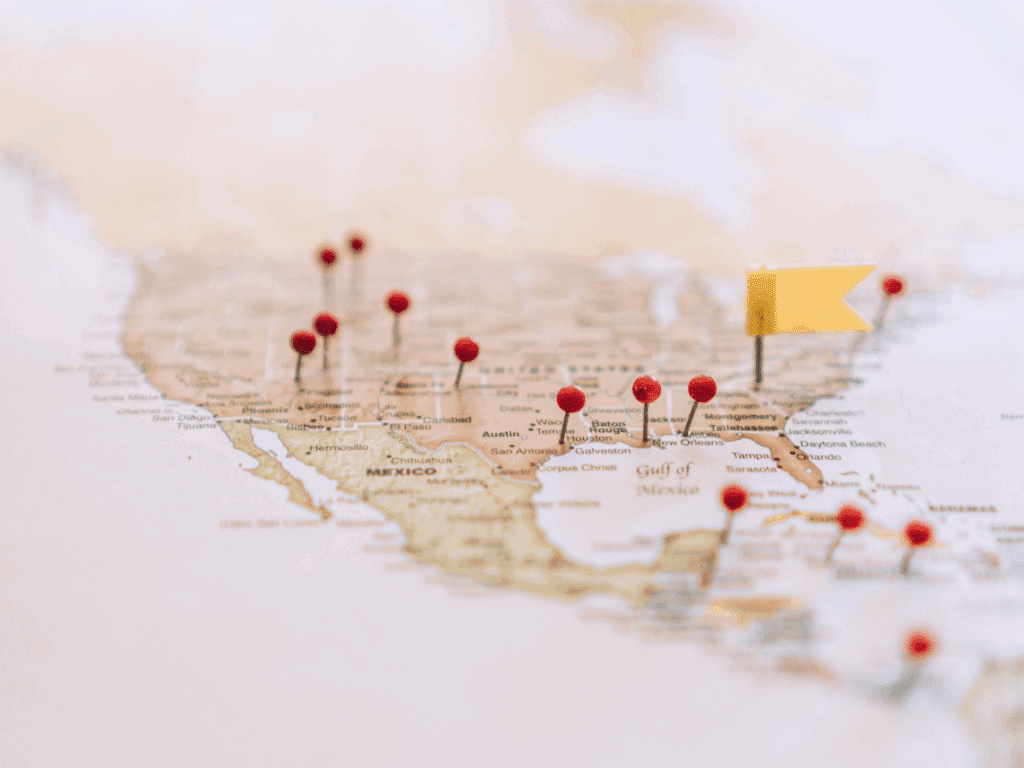As sustainable packaging continues to move from a nice-to-have to a regulatory requirement with extended producer responsibility laws, businesses across the United States are being held more accountable for the environmental impact of their packaging. From coast to coast, states are adopting different laws, standards, and timelines, which makes compliance a growing challenge for brands of all sizes.
Pioneer Packaging stays ahead of evolving rules so our partners can focus on what matters most: creating packaging that not only performs well but also aligns with changing regulations and sustainability goals.
A Patchwork of U.S. Packaging Regulations
Unlike countries with unified national packaging laws, the U.S. landscape is a fragmented mix of state-specific regulations. States like California, Oregon, Colorado, and Maine are leading the charge with legislation aimed at reducing packaging waste and shifting the financial burden of recycling and disposal from taxpayers to producers.
For businesses operating nationwide, this means navigating a complex regulatory environment where packaging must meet different requirements depending on the state in which it is sold. These requirements can include:
- Mandated recycled content minimums
- Chemical bans on materials like PFAS or certain dyes
- Labeling requirements for recyclability and disposal
What’s clear is that this regulatory momentum is not slowing down. Brands that take a reactive approach risk falling behind, or worse, facing penalties and losing customer trust.
Understanding Extended Producer Responsibility (EPR)
Extended producer responsibility is a policy approach that holds businesses financially and/or operationally responsible for the end-of-life management of the packaging they create. In simple terms, if your product comes in a package, your company is now increasingly expected to contribute to the cost of collecting, sorting, and recycling that package once it becomes waste.
Key components of extended producer responsibility include:
- Eco-Modulated Fees: Businesses may pay more for packaging that is hard to recycle, and less for materials that are easier to process.
- Reporting Requirements: Companies must disclose the types and volumes of packaging materials they use.
- Collection and Recycling Targets: Some programs require businesses to help fund or meet certain diversion goals.
States like Maine and Oregon have already passed EPR legislation, while others, including New York, Maryland, and Washington, are in active discussion. Each state approaches extended producer responsibility differently, adding to the complexity for national brands.
Breaking Down EPR Regulation Topics and Their Impact
Here are a few major regulatory themes associated with extended producer responsibility and what they could mean for your business:
- Recycled Content Mandates: California requires rigid plastic containers to contain a minimum percentage of post-consumer recycled content. Not meeting these requirements can result in penalties.
- Chemical Restrictions: States like Washington and Vermont have introduced bans on toxic substances such as PFAS in food packaging.
- Labeling Requirements: Proper labeling for recyclability is becoming more standardized. California’s SB 343 restricts the use of the recycling symbol on packaging unless it meets specific criteria.
These regulations are pushing brands to rethink material selection, packaging design, and supply chain transparency. They’re also reinforcing the importance of working with knowledgeable packaging partners who can ensure compliance without compromising functionality or aesthetics.
Building a Proactive Strategy Around Packaging Regulations
To stay ahead of extended producer responsibility requirements and broader packaging legislation, businesses should:
- Conduct a Packaging Audit: Understand what materials are currently used and where your products are sold.
- Collaborate with Packaging Experts: Partner with companies like Pioneer Packaging who understand evolving state-by-state regulations and can recommend compliant, sustainable alternatives.
- Plan for Scalability: Choose packaging materials and designs that meet the strictest state standards to streamline operations nationally.
- Stay Informed: Assign team members or work with consultants to monitor regulatory updates in key markets.
By developing a proactive and flexible approach, businesses can avoid surprises and position themselves as leaders in sustainable packaging.
Looking Ahead: Aligning Regulations with Sustainability Goals
As extended producer responsibility continues to gain momentum, businesses have a real opportunity to align regulatory compliance with their own environmental goals. Whether it’s reducing landfill waste, improving recyclability, or achieving carbon reduction targets, packaging plays a key role.
Forward-thinking companies are not only preparing for compliance; they are also using these shifts as a way to connect with eco-conscious consumers and reinforce their brand values. Circular packaging systems, closed-loop recycling, and investments in material innovation are just a few of the ways brands are future-proofing their packaging strategies.
Extended producer responsibility is more than just a regulatory trend; it is part of a larger shift toward accountability and sustainability in packaging. Navigating this space can be complex, especially with varying state regulations and frequent updates. However, with a clear understanding of the evolving landscape and a forward-looking strategy, it is entirely manageable.
Businesses that take proactive steps today will be better positioned to meet both compliance standards and consumer expectations in the future. By aligning packaging practices with environmental goals, companies can turn regulatory pressure into an opportunity for innovation, leadership, and long-term success.
Let’s move beyond compliance and build better packaging for the future.
Pioneer Packaging: Your Custom Packaging Solution Company
For over 38 years, Pioneer Packaging has been your company’s go-to for designing product packaging that sells and performs.
So whether you’re looking to get your paper product packaging at affordable prices or attract new consumers, we’ll find the best packaging solutions that fit your needs. We strive to keep costs down as much as possible to help our customers keep their brands moving along production lines.
Contact Pioneer Packaging today and learn why we’re a leader in B2B packaging solutions.
